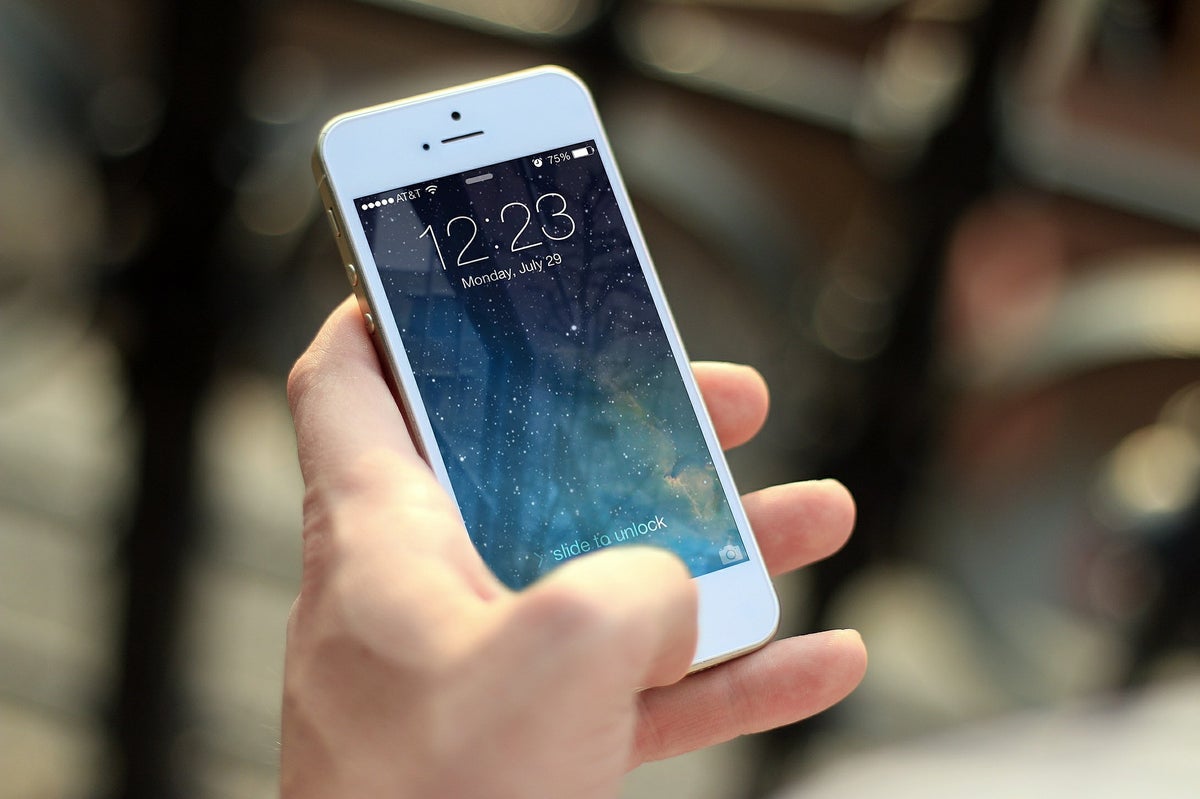![The Best International Cell Phone Plans For Travelers [Verizon, T-Mobile, AT&T, Google Fi]](https://upgradedpoints.com/wp-content/uploads/2019/11/Woman-using-phone-in-front-of-Eiffel-Tower.jpeg?auto=webp&disable=upscale&width=1200)
James (Jamie) started The Forward Cabin blog to educate readers about points, miles, and loyalty programs. He’s spoken at Princeton University and The New York Times Travel Show and has been quoted in.
Updated: August 29, 2024, 4:13am CDT43 Published Articles 3380 Edited Articles
Countries Visited: 50 U.S. States Visited: 28
With years of experience in corporate marketing and as the executive director of the American Chamber of Commerce in Qatar, Keri is now editor-in-chief at UP, overseeing daily content operations and r.
![The Best International Cell Phone Plans For Travelers [Verizon, T-Mobile, AT&T, Google Fi]](https://upgradedpoints.com/wp-content/uploads/2019/11/Woman-using-phone-in-front-of-Eiffel-Tower.jpeg?auto=webp&disable=upscale&width=1200)
We may be compensated when you click on product links, such as credit cards, from one or more of our advertising partners. Terms apply to the offers below. See our Advertising Policy for more about our partners, how we make money, and our rating methodology. Opinions and recommendations are ours alone.
Your phone is your map, source of information, and a translator. These modern conveniences have made international travel easier and safer. Whether you’re leaving for a year abroad, going off to become an expat, or are just heading for a long weekend in Mexico, you’ll need to sort out what you want to do for an international cell phone plan.
Similar to figuring out how international plugs work, making sure your passport is ready, and deciding on what to pack, your phone requires some preparation before you leave to travel internationally.
If you decide to stick to your current carrier or switch cell phone providers, the company you work with may charge you extra for your travels. Make sure you understand your plan carefully and know what it will cost to use your data, minutes, and texts — and what happens when you go over.
Once a few technical words get thrown around, many people think they won’t be able to understand how any of this works. Don’t worry, using a phone overseas isn’t as difficult as it can sometimes sound.
The first thing to understand is that different companies and countries all use their own technologies and frequencies. You need a phone that is compatible with these technologies.
Verizon uses a technology called CDMA (Code Division Multiple Access). Most other carriers and the world use what’s called GSM (Global System for Mobile Communication). There are phones on Verizon that also support GSM, but those that don’t won’t work as world phones.

Rather than explain the technical differences between GSM and CDMA, which often confuses folks, it’s important to understand that carriers use different technologies, and different parts of the world use different systems — what is relevant for you is which plans and carriers you can use abroad.
Hot Tip: If you bought a phone advertised as “unlocked” or “SIM-free,” it should be designed to be ready to use on global GSM networks.
Every carrier offers a list of popular models of “world phones,” including such options as the iPhone XRS Max and Samsung Galaxy S10.
Many of the phones you get for free or discounted in exchange for signing up for a service contract are locked. This means they are locked to the network the contract is with. Your cell phone provider prevents your phone from using another network, and it may not be able to work internationally.
Hot Tip: If your phone is locked, try asking your cell phone company if they will unlock it for you.
Unfortunately, there isn’t a one-size-fits-all option for international cell phone plans. Below, you’ll find information on all the major carriers and their plan options, along with the pros and cons of each. Use this to sort out what will work best for you and go with your gut.
Be aware that your needs will be different if you are traveling short-term versus a month or more. Plans like Verizon’s Above Unlimited have restrictions when you use more than 50% of your talk, text, or data while you’re traveling internationally (meaning, you shouldn’t use a U.S.-based plan when abroad full-time). They sometimes severely limit (or even cancel) your cell phone service when this happens. Keep this in mind when you’re reviewing your options.

Your first option on Verizon is its TravelPass plan, which gives you the option to take your regular talk, text, and data with you on your trip (meaning, you use whatever amount of talk, text and data speeds you regularly use within the United States).
You will be charged $5 a day (on every line) for days you use your service in Mexico and Canada. There is a list of 130 additional countries where you can use your phone at a rate of $10 per day. Most popular countries are included in this list, such as Argentina, Australia, Chile, France, the Netherlands, South Africa, the United Kingdom, and more.
Activating your TravelPass through the Verizon Wireless app is all you need to do to have coverage and it’s a simple add-on to your normal monthly bill.
When you arrive at an international location, your phone will automatically recognize where you are and will connect to the local signal. Once it does, your TravelPass kicks in and it won’t renew or use another pass until 24 hours (not a full calendar day) have elapsed. If you land in a foreign country at 2 p.m. on one day and leave at 11 a.m. the next day, you only use 1 TravelPass.
SCROLL FOR MORE| Verizon TravelPass Countries | |||||
| Albania | Chad | Greece | Liberia | Palestinian Territory | Spain |
| Aland Islands | Chile | Greenland | Liechtenstein | Panama | Sri Lanka |
| Algeria | China | Grenada | Lithuania | Papua New Guinea | Suriname |
| Anguilla | Christmas Island | Guadeloupe | Luxembourg | Paraguay | Svalbard |
| Antigua And Barbuda | Colombia | Guam | Macao | Peru | Swaziland |
| Argentina | Congo | Guatemala | Macedonia | Philippines | Sweden |
| Armenia | Costa Rica | Guernsey | Madagascar | Poland | Switzerland |
| Aruba | Cote D’ivoire | Guinea | Madeira and Azores | Portugal | Taiwan |
| Australia | Croatia | Guinea-Bissau | Malawi | Qatar | Tajikistan |
| Austria | Curacao | Guyana | Malaysia | Reunion | Tanzania |
| Azerbaijan | Cyprus | Haiti | Mali | Romania | Thailand |
| Bahamas | Czech Republic | Honduras | Malta | Russia | Timor-Leste |
| Bangladesh | Denmark | Hong Kong | Martinique | Rwanda | Tonga |
| Barbados | Dominica | Hungary | Mexico | Saint Barthelemy | Trinidad and Tobago |
| Belarus | Dominican Republic | Iceland | Moldova | Saint Eustatius & Saba | Tunisia |
| Belgium | Ecuador | India | Mongolia | Saint Kitts And Nevis | Turkey |
| Belize | Egypt | Indonesia | Montenegro | Saint Lucia | Turks and Caicos |
| Benin | El Salvador | Iraq | Montserrat | Saint Maarten (Dutch) | Uganda |
| Bermuda | England | Ireland | Morocco | Saint Martin (French) | Ukraine |
| Bolivia | Estonia | Isle of Man | Mozambique | Saint Vincent and the Grenadines | United Arab Emirates |
| Bosnia and Herzegovina | Faroe Islands | Israel | Myanmar | Samoa | United Kingdom |
| Botswana | Fiji | Italy | Nauru | San Marino | Uruguay |
| Brazil | Finland | Jamaica | Netherlands | Saudi Arabia | Uzbekistan |
| British Virgin Islands | France | Japan | Netherlands Antilles | Scotland | Vanuatu |
| Brunei Darussalam | French Guiana | Jersey | New Zealand | Senegal | Vatican City |
| Bulgaria | French Polynesia | Jordan | Nicaragua | Serbia | Venezuela |
| Burkina Faso | Gabon | Kazakhstan | Niger | Seychelles | Vietnam |
| Cambodia | Galapagos Islands | Kenya | Nigeria | Sierra Leone | Wales |
| Cameroon | Gambia | Korea, Republic of (South) | Northern Ireland | Singapore | Zambia |
| Canada | Georgia | Kuwait | Northern Mariana Islands | Slovakia | |
| Cape Verde | Germany | Kyrgyzstan | Norway | Slovenia | |
| Cayman Islands | Ghana | Laos | Oman | Solomon Islands | |
| Central African Republic | Gibraltar | Latvia | Pakistan | South Africa | |
If you use a lot of data uploading photos and using maps while you’re traveling, then you should be aware that the 4G speeds you rely on with Verizon are only available for your first 512 MB on the TravelPass. Once you’ve passed 512 MB, Verizon will throttle your speed down to 2G.
The Verizon Wireless Above Unlimited plan will offer you unlimited data, no contract, for $95 per month. You can receive a $5 a month discount if you set your payments to auto-pay.
This plan isn’t an add-on, but is one that you can use when you’re on brief trips abroad when you feel like it. Essentially, instead of charging you separate per-use days like the TravelPass add-on, the passes are built-in to the plan itself.
Talk, text, and data are included while you’re in Mexico and Canada (no extra charge) and the plan comes with 5 TravelPasses every month. This means you can use a TravelPass for talk, text, and data in 130 countries for 5 days per month with no extra expense. If you exceed the 5 free days a month, then you’ll continue at the normal rate of $10 per additional day.
Again, once you’ve used 512 MB of 4G speeds, you’ll be throttled down to 2G.
For comparison, if you decide to pay as you go on Verizon while abroad, you’ll be charged top rates. It costs $.99 a minute for calling in Canada and Mexico, $1.79+ in most other countries, $.50 for every text you send, $.05 for every text you receive and $2.05 for every MB of data you use. A simple app download or directions on a map can cost you several hundreds of dollars, so keep this in mind if you decide to pay as you go.
For cruise ships, there’s a fairly basic plan that’s included with your basic service. It will cost $2.99 a minute for calling, $.50 to send a text, and $.05 to receive a text; no data capabilities are available while at sea.

Pros:
Cons:
Bottom Line: This Plan Is Great For: People who already use Verizon and don’t want to have to call to add an international add-on. If you take frequent and short trips abroad in areas where it has service, the Above Unlimited is a great choice.
T-Mobile is a great option for international travel because its plans make things simple.
The T-Mobile One plan for unlimited data lets you keep your unlimited data and texting when you travel to 210 locations. However, it caps your data at a shockingly low 128 kbps. This means that even just browsing web pages (exclusive of video) you’ll be throttled down to 2G speeds. It also charges for international phone calls, so if you talk a lot on your phone this can become expensive quickly.
To combat these downsides, T-Mobile offers International Passes for faster data while you’re abroad. Its 5 GB pass keeps you on the 4G network for 10 days with unlimited calling at a cost of $35. It also has an option for 15 GB for 30 full days at $50.
» Related: The 9 Best Business Credit Cards for Paying Cell Phone Bills January 2024Another option is a $5 pass with 512 MB of high-speed data and unlimited calling. This is much more limited, but if you’re traveling for a short period and don’t believe you’ll be making many calls on FaceTime or another data-consuming app, this can be a simple add-on with enough to get online at faster speeds.
Cruise rates vary depending on the ship or destination you’re traveling to (you can check here for rates), but as an example, if you choose to travel on the Royal Caribbean Voyager of the Seas which sails in the South Pacific, your at-home T-Mobile plan includes no data on the cruise ship, $.50 for sent texts, and $5.99 a minute for calls.

Pros:
Cons:
Bottom Line: This Plan Is Great For: People who travel frequently and want international service included at no additional expense. This plan is cheapest when you don’t mind super slow 2G speeds when traveling abroad.
On both the Unlimited & More and the Unlimited & More Premium plans on AT&T, you will be able to travel to Mexico and Canada with all of your talk, data, and text already paid for. Its Mobile Share Plus plans allow you to use your talk, text, and data when you are in Mexico.
In 100+ other countries, AT&T offers an International Day Pass for $10 a day, offering the unlimited talk, text, and data already in your regular plan.
This charge can add up quickly when you’re on longer trips, though. The AT&T Passport plan lets you use your normal within-U.S. plan for 30 days while you’re out of the country. AT&T recently redid this plan, since the old AT&T passport option only offered 200 MB of data, which is just not enough for most people.
The Passport plan costs $60 for 30 days and offers 1 GB of data and unlimited texting. You can raise this to 3 GB of data for $120 for the month. At that point, you should never go any further if you value your budget, because it charges you $50 for every GB over the 3 GB. Phone calls are not included and you will be charged $.35 per minute.
SCROLL FOR MORE






































































































































































































































































































































If you’re headed onto a cruise, AT&T also has you covered with 2 plans. Its $100-a-month plan includes unlimited talk and text and 200 MB of data, with additional data costing $2 per MB. Its $50-a-month cruise package includes 50 minutes of talk (overages charged at $2 per minute), unlimited texting, and no data.
Data on cruising is expensive no matter which plan you choose, so if you can, subscribe to the onboard Wi-Fi that your cruise ship may offer.
For comparison, if you don’t choose one of these plans, you’re charged at insane rates: $3 per minute for talk, $.50 for each text sent and over $6 for every MB of data you use. Yikes!
Pros:
Cons:
Looking for more information? See our detailed piece dedicated to AT&T International Phone Plans including countries, coverage rates, and more.
Bottom Line: This Plan Is Great For: People who love data and texting, but aren’t big on making phone calls. It’s not the best if you are on a shared plan and going to be buying an International Day Pass for everyone in your group, but the 30-day plans with unlimited data are excellent for users who mostly need its phones for data or texting while on an extended trip.

Google Fi doesn’t come up as an option as a major carrier (yet). While it may not yet be a mainstream option, it is one that is becoming increasingly popular with frequent travelers.
Google Fi treats international data and domestic data the same. It uses the cell towers of T-Mobile and US Cellular and covers over 200 locations.
Internationally, your calls will cost $.20, unless you are on Wi-Fi, which will be free. You still have unlimited text messages while traveling internationally.
Its plans cost $20 for a month of unlimited talk and text and every 1 GB of data is $10 a month. The data is rounded off to the nearest MB meaning you only pay for the data you actually use. If you are a heavy data user, it stops charging you at 6 GB. This means your bill will never be over $80 a month.
Google Fi offers a few phones, but it is also open to using most phones you’ve purchased elsewhere, including the iPhone. Buying one of its phones (like the Google Pixel or some of the Moto and LG phones) makes it so that you can switch between cell networks and hotspots easier.
If you’re using Google Fi aboard a cruise ship, make sure to connect to the onboard Wi-Fi for free calls.
Pros:
Cons:
Bottom Line: This Plan Is Great For: Frequent travelers and those who have an approved phone or who are interested in buying a Google Pixel (or other phone sold by Google). It’s important that the T-Mobile/US Cellular cell towers work well for you in your local area when you’re back at home.
There’s no doubt that using your phone outside of the U.S. can be a bit pricey — most major plans cost more than you pay for your domestic service. To save on these costs while outside of the country, there are a few things you can do:
This may sound obvious, but it’s one of the biggest ways you can save money. Most phone plans can make calls over Wi-Fi for no extra cost, and you are able to download movies, music, or check emails without using cellular data.
Most branded hotels offer some type of complimentary Wi-Fi for a daily nominal rate. When you’re in your hotel, enable your phone to automatically connect to the hotel’s signal so that you won’t have to think about whether or not your phone is using international roaming rates. Outside of the hotel, many museums, restaurants, and even public spaces offer complimentary Wi-Fi.
There are several major hotspots designed for traveling. One of the largest brands is Skyroam. For as little as $9 a day, you can enjoy unlimited data. The hotspots offer a flat daily rate so you don’t have to worry about different charges for different areas or overages.
Since a hotspot usually provides unlimited data, it is more than likely cheaper than your traditional cell phone plan international service. You can connect your phone to this hotspot signal to make calls over Wi-Fi, download any necessary emails, and use your phone as a GPS, all without worrying about eating up precious data.
The only downside to using a hotspot is that it is an extra device you will have to carry with you when you are out. Some travelers clip the hotspot onto their belt, or stuff it in a backpack.
Many cell phone plans charge for every day you use talk, text, and data abroad — and the more days you use it, the higher your charges. There may be some days, however, where you don’t need data as much — for example, you might be inside all day where you can connect to Wi-Fi, or you may be flying between countries where you will be away from a cell signal.
Whatever the case, if you shut off your cellular signal (or turn your phone in Airplane Mode, as many people do), your phone won’t connect to a network and you won’t be charged for that day’s worth of usage.

The best international cell phone plan will be an individual decision.
While Google Fi isn’t one of the major mainstream U.S. carriers, it shouldn’t be overlooked as it is one of the strongest options for international plans, especially those who rely heavily on data.
T-Mobile’s plans are a strong option for those who need great coverage at home and internationally for frequent trips. AT&T’s plan for travel is great for trips to Canada and Mexico since both are included in the most basic version.
Consider what your travel plans are — where you are going and how often, what your needs are at home, and whether voice, data, or texting is most important to you. When you know what your needs are, it’s easier to make a decision on which are the best plans to get you the most coverage for the best price.
Featured Image Credit: Tom Merton/Caia Image / Adobe StockMost modern cell phones are equipped to work internationally, however, to be able to actually talk, text or use data, you need to contact your wireless carrier to ensure that your phone can connect to a network abroad. Usually, this requires you to subscribe to your wireless carrier’s international cellular plan, which may cost a few dollars a day.
AT&T offers 2 international plans – a day pass type plan that charges by the day, and a Passport plan that allows the user to use their phone abroad for a month for a set price.
Was this page helpful?
James (Jamie) started The Forward Cabin blog to educate readers about points, miles, and loyalty programs. He’s spoken at Princeton University and The New York Times Travel Show and has been quoted in dozens of travel publications.
INSIDERS ONLY: UP PULSE ™

Get the latest travel tips, crucial news, flight & hotel deal alerts.
Plus — expert strategies to maximize your points & miles by joining our (free) newsletter.
We respect your privacy. This site is protected by reCAPTCHA. Google's privacy policy and terms of service apply.